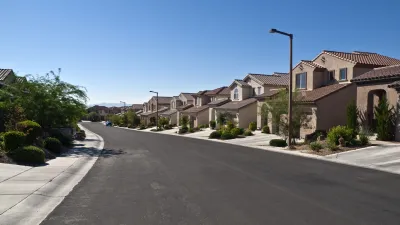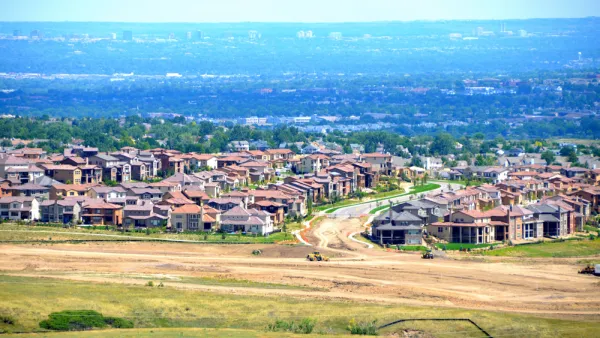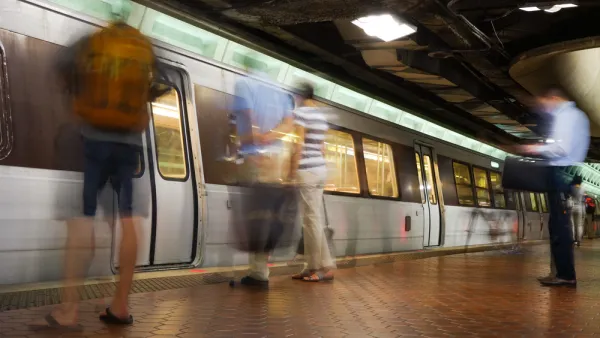The country cannot hope to achieve its goals for the reduction of greenhouse gas emissions without fundamentally rethinking its land use and development patterns, according to this article.

The Biden administration in April announced a bold target to reduce the country's greenhouse gas emissions by 50 percent from 2005 levels by the end of this decade. A recent report by researchers at the Brookings Institution argues that those targets won't be possible without systems-level changes in very sector of the economy, and unfortunately, the strategy announced by the Bien administration only skimmed over a "central driver of the climate crisis": unsustainable land use practices.
Adie Tomer, Joseph W. Kane, Jenny Schuetz, and Caroline George write to recenter land use in climate discussions, stating that the country won't achieve its goals to reduce greenhouse gas emissions by continuing to grow as it has in the past.
"After decades of sprawl, the U.S. has the dubious honor of being a world leader in both building-related energy consumption and vehicle miles traveled per capita. Making matters worse, lower-density development also pollutes our water and requires higher relative emissions during the initial construction," reads the article.
As a prescription for the consequences of the history of land use in the United States, the article proposes: "We must prioritize development in the kinds of neighborhoods that permanently reduce total driving and consume less energy."
"Such human-centered neighborhoods have the added benefit of helping us adapt to climate impacts, improve public health, and promote access to activities. Encouraging their development should be a central part of any national climate resilience strategy," continues the article.
Environmentalists have long connected sprawling development patterns to negative environmental outcomes like air pollution, but the connections between sprawl and the emissions that cause climate change tend to be underappreciated, or deliberately ignored, by even some of the most ardent environmentalists. The international community, led by the United Nations, has recently amplified the blame for climate change on the appetite in the United States for large, gas guzzling automobiles and sprawling development patterns.
FULL STORY: We can’t beat the climate crisis without rethinking land use

National Parks Layoffs Will Cause Communities to Lose Billions
Thousands of essential park workers were laid off this week, just before the busy spring break season.

Retro-silient?: America’s First “Eco-burb,” The Woodlands Turns 50
A master-planned community north of Houston offers lessons on green infrastructure and resilient design, but falls short of its founder’s lofty affordability and walkability goals.

Delivering for America Plan Will Downgrade Mail Service in at Least 49.5 Percent of Zip Codes
Republican and Democrat lawmakers criticize the plan for its disproportionate negative impact on rural communities.

Test News Post 1
This is a summary

Test News Headline 46
Test for the image on the front page.

Balancing Bombs and Butterflies: How the National Guard Protects a Rare Species
The National Guard at Fort Indiantown Gap uses GIS technology and land management strategies to balance military training with conservation efforts, ensuring the survival of the rare eastern regal fritillary butterfly.
Urban Design for Planners 1: Software Tools
This six-course series explores essential urban design concepts using open source software and equips planners with the tools they need to participate fully in the urban design process.
Planning for Universal Design
Learn the tools for implementing Universal Design in planning regulations.
EMC Planning Group, Inc.
Planetizen
Planetizen
Mpact (formerly Rail~Volution)
Great Falls Development Authority, Inc.
HUDs Office of Policy Development and Research
NYU Wagner Graduate School of Public Service





























